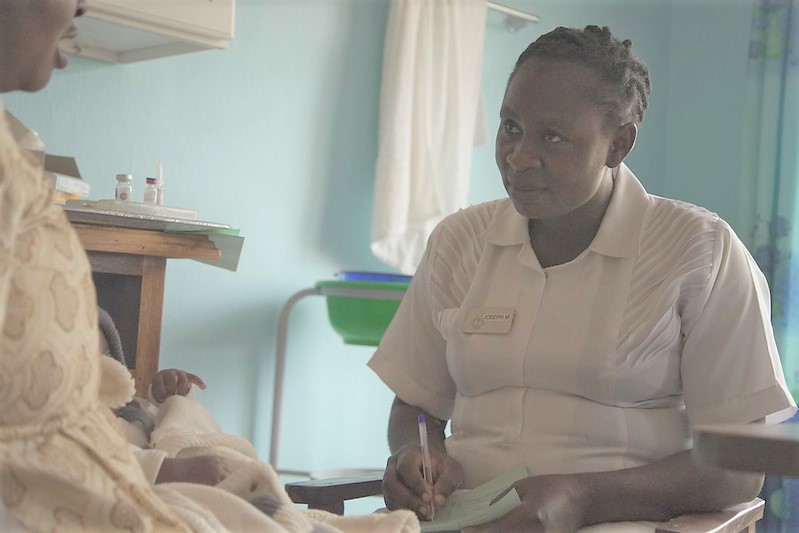HIV/AIDS in Nigeria
 HIV/AIDS is a prevalent health problem in Nigeria, with 1.3% of the adult population living with the disease as of 2021. Prevention, detection and treatment have improved in recent years, but considerable progress is necessary to move closer to ending HIV/AIDS in Nigeria by the end of the decade.
HIV/AIDS is a prevalent health problem in Nigeria, with 1.3% of the adult population living with the disease as of 2021. Prevention, detection and treatment have improved in recent years, but considerable progress is necessary to move closer to ending HIV/AIDS in Nigeria by the end of the decade.
Key Statistics
Approximately 1.9 million Nigerians lived with HIV/AIDS in 2021 and the country noted 74,000 new infections in the same year alongside 51,000 AIDS-related mortalities. The country’s large population of around 213 million people means that, despite a relatively low prevalence rate, Nigeria has suffered the most significant HIV epidemic in West and Central Africa.
Women in Nigeria are at higher risk of contracting HIV than men, with an infection rate of 1.6% compared to 1% for men. This gender imbalance is even more pronounced in those aged 15-24, the age group which accounts for 40% of HIV/AIDS cases in the country. Many children suffer, too. Nigerian children make up 14% of the global total of childhood HIV/AIDS cases, with 260,000 new cases recorded in children aged up to 14 in 2015 alone.
Nigeria has not yet met the UNAIDS 95-95-95 targets for 2025 concerning testing and treatment with only 90% of Nigerians knowing their status as of 2021.
Barriers to Elimination
Barriers posing difficulties in addressing HIV/AIDS in Nigeria range from difficulties in accessing treatment, particularly for children and those living in rural areas, to the widespread stigma around the disease which discourages people from seeking life-saving treatment. Late diagnosis is a key issue, with around a third of people only receiving a diagnosis after HIV has already progressed to AIDS. Progress in reducing mother-to-child transmission has been slow too. The prevalence of this form of transmission only dropped by 15% between 2010 and 2020, compared with a reduction rate of up to 70% in other countries, such as Uganda.
Moreover, the Nigerian government has not, thus far, dedicated a significant portion of its budget to the HIV/AIDS response. The majority of funding for programs dedicated to tackling prevention, care and treatment comes from international organizations and donors.
Solutions and Progress
In recent years, significant progress has been made in the fight against HIV/AIDS in Nigeria. Since 2017, the number of people receiving treatment has almost doubled and 98 more treatment centers have developed. Of the 1.9 million Nigerians living with the disease, approximately 1.62 million are on antiretroviral treatment.
HIV/AIDS prevention in Nigeria takes many forms. This includes the introduction of medications like PEP and PrEP, targeted services for girls and young women in areas with a high prevalence of the disease and the dispersal of barrier methods of contraception such as condoms.
Testing is available in a multitude of venues, including community spaces, homes, workplaces and after-hours clinics that serve communities most at risk. New infections are falling, with the number of recorded cases dropping by more than 10,000 between 2019 and 2021.
The work of organizations plays a critical role. The United Nations Office on Drugs and Crime, for example, conducted the first countrywide survey to assess the state of HIV/AIDS, health care and drug reliance in Nigerian prisons, and as part of this, provided HIV-related training for health workers in Nigerian prisons.
A Look Ahead
Efforts toward tackling HIV/AIDS in Nigeria have greatly reduced the number of Nigerians living with the disease. For those who are infected, health programs have improved both their prognoses and quality of life. More work is necessary for the country to realize its target of eliminating the disease by 2030. The importance of foreign aid to support these efforts is especially important, considering the lack of funding from the country’s own government. The international community can do more to ensure an HIV/AIDS-free future for Nigeria.
– Martha Probert
Photo: Flickr
